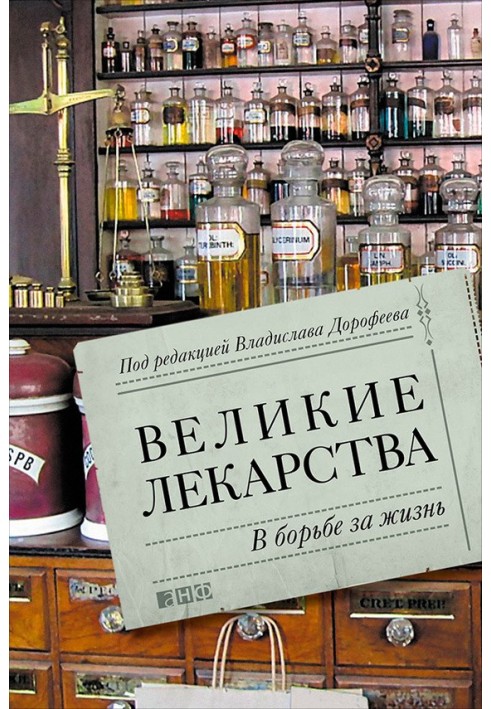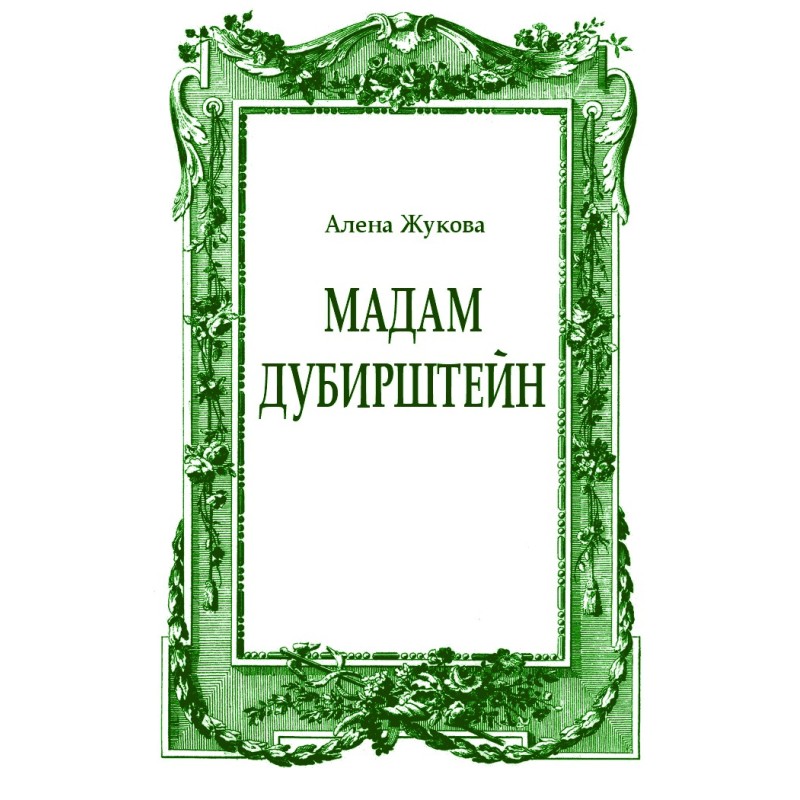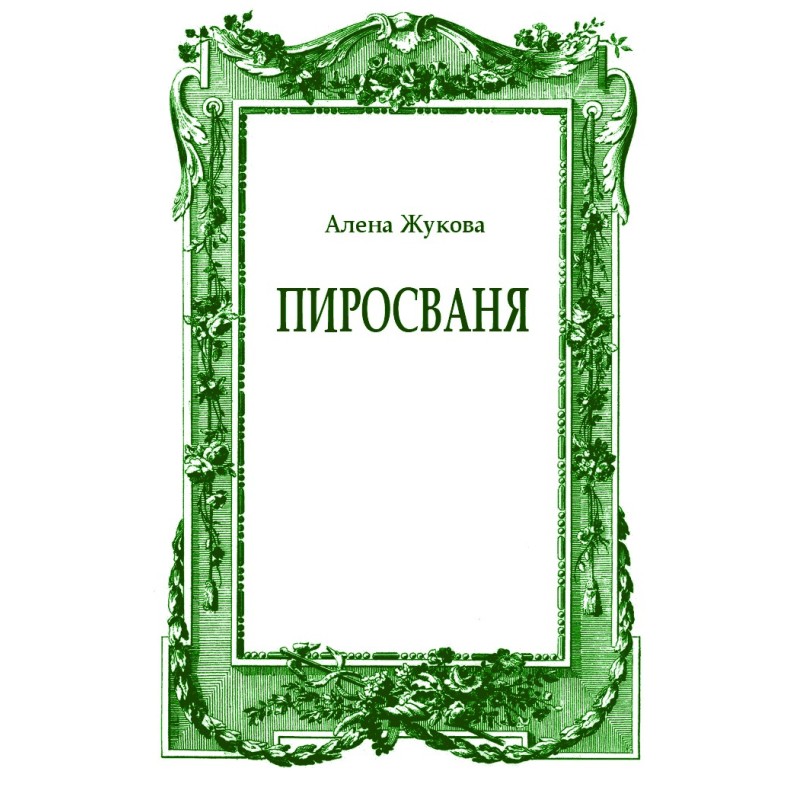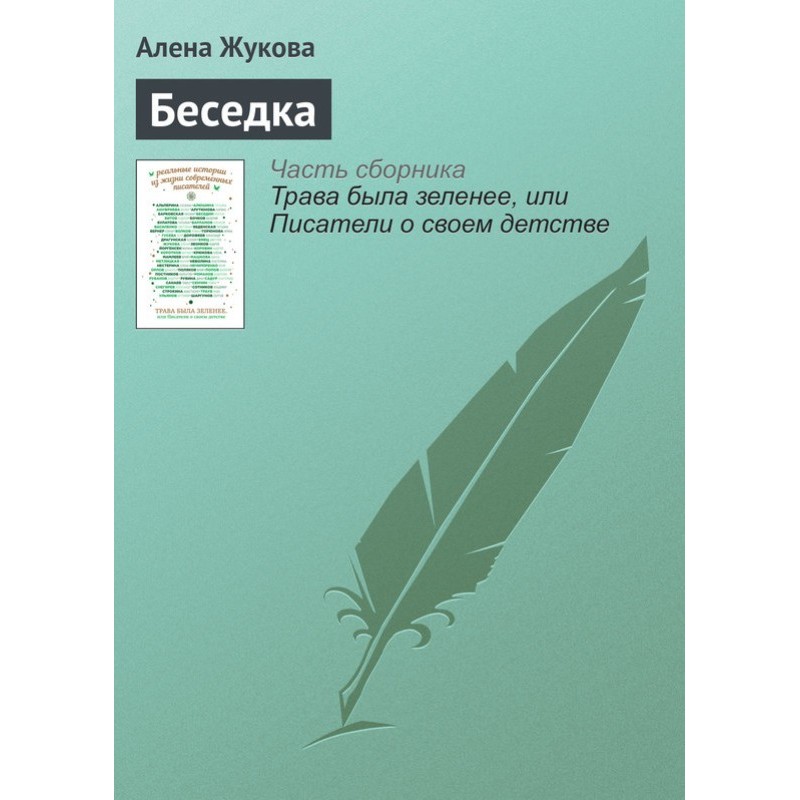Great medicines. In the fight for life
 Instant download
Instant download
after payment (24/7)
 Wide range of formats
Wide range of formats
(for all gadgets)
 Full book
Full book
(including for Apple and Android)
The history of medicines is inseparable from the history of civilization and is no less fascinating with its ups and downs, wars and exploits, discoveries and adventures. But although there is not a single nameless pill, vaccine or drug, the names of their creators often remain in the shadows. Our book is an attempt to at least partially correct this injustice and talk about the great medicines that changed the destinies of mankind. And their great authors. It is thanks to them that today plague, cholera, tuberculosis, and smallpox have been left behind. But new illnesses and new challenges appear. The long life of our contemporary puts him in the face of illnesses that our ancestors did not live to see. What will save us in the race against illness and death: personalization of treatment, timely and comprehensive diagnosis? Or should we be talking about some new symbiosis? pharmaceuticals and medicine? One way or another, it is unlikely that we will ever learn to do without drugs. The information presented in the book may be an artistic reconstruction or the opinion of the authors.
You will read about the drugs that have changed and are changing humanity in our book, but this is only a small part of the drugs that have saved and are saving for thousands of years people from pain, illness and premature death. Medicines that have changed and are changing humanity, help overcome suffering, and sometimes even death itself, and which exist thanks to the efforts of companies, the aspirations of states and, most importantly, the sacrificial passion of individuals, their creators.
The first medicines were plants, the healing properties of which people have discovered experimentally. For example, observing therapeutic the actions of plants on animals.
Perhaps, in order not to leave a person alone with pain and weakness, God invented doctors and pharmacists who discover medicines and methods of their use. And this battle will never end, because the battle between suffering and tranquility, extinction and recovery, fear and hope, life and death is endless.
The age of medicine is shorter than the age of man: science moves forward, and by what further, the faster. Like everything, medicines become obsolete. More effective ones appear. But aspirin not only has not become obsolete in more than a hundred years, but also demonstrates new aspects of its effect. It seems to cure all diseases - from colds to strokes.
Terrorizing humanity for centuries, smallpox has killed, according to some estimates, about half a billion human lives, taking a stable first place among the most terrible killer diseases. The unhindered dominance of the terrible disease continued until it was challenged at the end of the 18th century by the English country doctor Edward Jenner, and in the second half of the 20th century, the Tomsk enterprise NPO Virion, which produced 1.5 billion doses of high-quality smallpox vaccine, then supplied by the USSR completely free of charge to different regions of the world under the patronage of WHO.
The world's first drug for the correction of impotence appeared due to a side effect of the drug that was supposed to treat cardiovascular problems (high blood pressure and angina). The medicine did not work for the heart and blood vessels, but it caused a real revolution in the groin, which is now called the second sexy. In addition, as it turned out after the advent of Viagra, the problem of erectile dysfunction turned out to be no less common and no less dangerous than angina.
If you want to hide something, put it in the most visible place. Vitamins directly related to nutrition have invisibly accompanied man throughout his entire existence, but their discovery, by historical standards, occurred quite recently, at the end of the 19th century, through the efforts of the Russian scientist, doctor Nikolai Lunin. And the term “vitamin” itself arose only at the very beginning of the 20th century.
Those who were born in the new Russia are unlikely to have heard about the horrors of Soviet punitive medicine. And for Soviet people, haloperidol was one of the horror stories. Whatever they called this medicine, with the help of which they fought dissidents - vitamin “G”, “tick”, “galik”. They said that the drug was used on those disliked by the state, political prisoners, and dissidents not to cure them, but to break their will and ultimately turn a healthy person into a vegetable. Probably, the horror stories had something to do with reality. But this does not negate the fact that, in fact, they were talking about one of the most effective and most necessary antipsychotic drugs ever invented by mankind.
When Herceptin was just preparing for registration in 1998, The press was full of reports about a revolution in cancer treatment. Indeed, this drug became the first targeted drug based on an antibody that did not hit all the cells of the body, like traditional chemotherapy drugs, but hit a specific target, characteristic of specific form of breast cancer (BC). The history of its creation was long, difficult and dramatic. After all, a medicine of a class that had not yet existed was born.
Despite the fact that patients of a dermatologist, endocrinologist, allergist and pulmonologist can be treated with hydrocortisone, the main purpose of glucocorticosteroids is the treatment of arthritis, and in this area the drug has achieved a real revolution - before its appearance there was nothing similar.
Chronic myeloid leukemia (CML) is a severe oncohematological disease, which until recently was considered a death sentence. Patients with CML lived three to five years after diagnosis. But medicine does not stand still, and today patients with leukemia can live long lives, give birth to children and raise grandchildren. A breakthrough in the treatment of CML was the appearance of a targeted drug - imatinib under the trade name "Gleevec".
From the first days of its history, humanity has been struggling with a disease that, it would seem, is ready to give up in a fight, then again gains strength under unfavorable socio-economic conditions conditions - during wars and in an era of serious changes. Of all infectious diseases, tuberculosis is second only to HIV/AIDS in terms of mortality. It is not for nothing that it was previously called the “white plague.”
Insulin is called the most revolutionary drug, which at the beginning of the twentieth century gave life to patients with diabetes. The history of insulin is more than 90 years old. Three Nobel Prizes are associated with it.
The root “cain” in popular drugs - novocaine, lidocaine, etc. - is reminiscent of cocaine - the legendary plant anesthetic origin, the predecessor of modern synthetic painkillers.
Pain syndrome accompanies most diseases. Throughout its history, humanity has been looking for ways to stop it. For thousands of years, plants have been used for this purpose, the use of which, in addition to the analgesic effect, clouded consciousness. A turning point in the history of local anesthetics was the appearance in the 1940s of lidocaine, the first amide drug. The substance not only surpassed in effectiveness all existing painkillers at that time, but also continues to be widely used today.
Perhaps the name of the drug “Lipitor” (on the Russian market - “Liprimar”) is not so widely known to Russians , such as “Aspirin” or “No-shpa”. However, in 2013 this a drug to lower blood cholesterol entered the top ten best-selling products in the world - along with the Rubik's cube, iPhone and iPod, the book "Harry Potter", the film "Star Wars", Toyota Corolla, Michael Jackson's album "Thriller" and the drug "Losek" ".
Unpleasant symptoms such as heartburn or belching are, unfortunately, familiar to many. According to statistics, they affect from 20 to 40% of the world's inhabitants. But few people know that their presence most often indicates that a person may suffer from so-called acid-dependent gastrointestinal diseases.
A faithful friend of heart patients (they carry it in their breast pocket and are afraid to forget or lose it), is almost saving the lives of millions for a century and a half - the same substance as the killer of many lives, the main component of dynamite - nitroglycerin.
To this day, breast cancer (BC) remains the leading cause of death from cancer among women both in Russia and around the world. At the same time, cancer is rapidly getting younger (if the upper limit is considered to be 90 years of age - although Russian oncologists once treated the disease in a woman who was 101 years old, then the lower limit has already dropped to 13!), and its growth rate has not yet decreased. Today, on average, every eighth woman in the world falls ill with it.
In the entire history of mankind, there has been no medicine that could save as many people from death as penicillin. It is thanks to him that the average human life expectancy has doubled. In Europe in the 16th century it was 21 years, in the 17th century it was 26 years, in the 18th century it was 34 years, and at the end of the 19th century it was 50 years. That is, it grew, but little by little. And now in In developed countries it has reached 80 years or more. And antibiotics and their king, penicillin, did this.
Russia ranks first in the world in cerebrovascular diseases. About 450,000 cases of strokes are recorded annually in Russia. More than 200,000 people die, about 160,000 become disabled. Only in recent years has the drug Pradaxa appeared on the market, which is so superior to its predecessors in terms of effectiveness and ease of use that immediately after entering the market it became the world standard for the fight against stroke.
Perhaps it is difficult to find a drug that which would cause as much discussion and controversy both in the medical community and in society as Prozac. Its name has become a certain symbol of the era - the era of complex and unbalanced life at the limit of one’s own possibilities and therefore requiring constant correction of the emotional state, replenishment of mental and physical strength. According to statistics, more than 40 million people on the planet are now taking Prozac.
Even now, worldwide mortality from influenza reaches 2 million people a year - more than from AIDS. If we recall the largest influenza epidemics, it becomes clear why many generations of pharmacists considered it their duty to create a cure for influenza. It was only at the end of the twentieth century that a medicine based on the active substance oseltamivir appeared, which was able to effectively resist the constantly mutating influenza virus. A pinch of this powder still costs several times more than gold.
In the middle of the 20th century, the first hormonal contraceptive for women, Enovid, was introduced to the market, which predetermined subsequent female emancipation and the sexual revolution.
By turning off consciousness, general anesthesia protects the patient not only from pain and stress. Thanks to anesthesia, all the body's biochemical reactions to pain slow down, the patient's muscles relax, allowing the surgeon to perform the operation as efficiently as possible. The first substance with such abilities was ether. Having made a revolution in medicine, it later gave way to more modern drugs.
Big Pharma - this is how it is customary to designate about fifty global pharmaceutical and biopharmaceutical companies that determine the main quantitative and qualitative parameters of the global drug market, the presence of which is completely noted and everywhere, in every country, city and home on the planet.
Since 1900 year, the average life expectancy in the world increased from 48 to 78 years thanks to the development of medicine in general and pharmaceuticals in particular. How and why does the pharmaceuticals and medicinal industry live today? It is important to understand this, since today drug therapy remains the main means of human treatment.
Data sheet
- Name of the Author
- Ада Горбачева
Галина Костина
Дарья Николаева
Екатерина Пичугина
Елена Мекшун Александровна
Константин Анохин
Наталья Мушкатёрова Сергеевна
Ольга Жукова Григорьевна
Полина Звездина - Language
- Russian




















